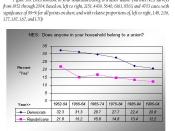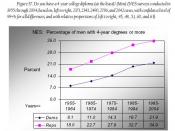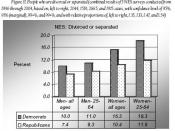An important characteristic of the later half of the nineteenth century was the political stability of the party systems in the United States. Approximately after the Civil War from the end of Reconstruction up until the late 1890's, the American electorate was almost precisely divided half-and-half between the Republicans and the Democrats. There were virtually no floundering or ambiguous loyalties with the exception of five states that often decided the national elections on the basis of voter turnout.
Of all the states in the Union at that time, sixteen states were solidly and consistently Republican. A majority of the fourteen Democratic states were in the South. In the five presidential elections beginning in 1876, the average popular vote margin separating the Democratic and Republican candidates was 1.5 percent. In addition to the balance between the parties, a striking detail during the era was the intensity of the public loyalty towards their political parties.
A large number of voters turned out to vote for the presidential election between 1860 and 1900 averaging over 78 percent of all eligible voters. During the periods of non-presidential elections, over 60 percent of the eligible voters turned out to cast ballots for congressional and local candidates. Although large numbers of potential voters did not have suffrage (women in a majority of the states, blacks and poor whites in the southern states), during these years, the predominantly white male vote population represented authentic mass-based politics.
Political campaigns were often the most important public events in the lives of communities. Political organizations served important social and cultural functions. Political identification was almost as important to most individuals as identification with a church or an ethnic group. The reason behind this fierce loyalty to the parties lies in the fact that both parties took positions on important...


